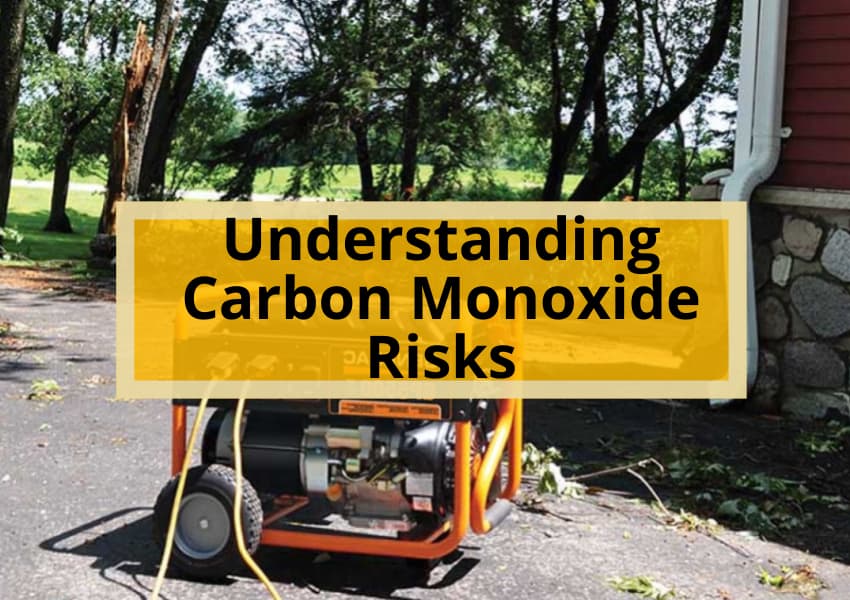Generators are essential tools for people who live in areas prone to power outages or those who work in remote locations. They provide a reliable source of power when electricity is not available, ensuring that essential appliances and devices continue to function. However, as much as generators can be lifesavers, they can also be deadly if not used properly. In fact, the improper use of generators has been responsible for thousands of deaths and injuries over the years.
One of the most significant risks associated with generators is carbon monoxide poisoning, a silent killer that claims many lives each year. Carbon monoxide is a colorless, odorless gas that is produced when fuel is burned in a generator’s engine. When inhaled in high concentrations, it can cause flu-like symptoms, headaches, dizziness, and even death. Therefore, understanding the risks associated with generator use and taking appropriate precautions is essential for keeping yourself and those around you safe.
In this article, we will explore the dangers of carbon monoxide from generators and provide tips for safe generator use to help you avoid becoming a victim of this silent killer.
Generator Emissions
In terms of emissions, propane generators are a cleaner alternative to gasoline generators as they produce fewer pollutants and emit about half the amount of carbon dioxide. This is an important factor to consider as electric prices are usually two to three times higher than natural gas prices.
Propane generators are a popular choice for backup power because they are safe for the environment and do not emit greenhouse gases. They are critical for maintaining peace of mind because they are free of toxins and have storage tanks fitted with security valves to prevent spills.
Preventing accidents is of utmost importance when operating generators. Proper ventilation is crucial to ensure that carbon monoxide does not build up and cause harm to those nearby. While propane generators are not inherently safer than gasoline generators, they are a safer alternative for the environment.
Generators should never be run indoors or in enclosed spaces, and portable generators should be kept as far away from people and pets as possible. By following these guidelines, accidents and carbon monoxide poisoning can be prevented.
Carbon Monoxide Poisoning
Symptoms of poisoning caused by exposure to carbon monoxide include headaches, dizziness, weakness, confusion, chest pain, and nausea. These symptoms are similar to the flu, making it difficult to recognize carbon monoxide poisoning. Prolonged exposure to carbon monoxide can lead to loss of consciousness, brain damage, and even death. Therefore, it is important to take preventative measures to avoid exposure to this deadly gas.

Prevention measures include ensuring that generators are never operated indoors or in enclosed spaces, as carbon monoxide buildup can occur quickly. Additionally, generators should be placed at least 20 feet away from windows, doors, and air intakes to prevent carbon monoxide from entering the home. It is also recommended to install battery-powered carbon monoxide detectors in the home to alert occupants of potential exposure.
Proper ventilation is crucial in preventing carbon monoxide poisoning, and generators should only be used in well-ventilated areas. By taking these preventative measures, individuals can avoid the risks associated with carbon monoxide poisoning and ensure the safety of themselves and their loved ones.
also read : Generator Overload: Don’t Get Left In The Dark
Propane vs Gasoline
When considering emergency power options, it is important to weigh the benefits and drawbacks of propane versus gasoline as fuel sources.
Propane generators produce fewer pollutants than gasoline or diesel, making them a cleaner-burning option that does not emit greenhouse gases. Additionally, propane generators produce about half the amount of carbon dioxide as gasoline generators, making them safer for the environment.
Propane has numerous advantages over gasoline, especially in terms of its environmental impact. Propane is a clean fuel and does not pose a threat to the environment. Propane generators are critical for maintaining peace of mind because they are free of toxins, have storage tanks fitted with security valves to prevent spills, and are a safer alternative for the environment.
If you are looking for an emergency power source that is both effective and environmentally friendly, propane generators are the way to go.
Frequently Asked Questions
How often should a whole house generator be serviced and properly ventilated?
Generator maintenance and proper ventilation are crucial for whole house generators. Regular servicing is recommended to ensure safe and efficient operation. Adequate ventilation helps to prevent the buildup of harmful gases, including carbon monoxide, which can be fatal if inhaled.
What are some symptoms of carbon monoxide poisoning?
Symptoms of carbon monoxide poisoning include headaches, dizziness, weakness, and nausea. Prevention tips include using battery-powered CO detectors with portable generators, avoiding running generators indoors or near people/pets, and using propane generators which produce fewer pollutants and do not emit greenhouse gases.
Can propane generators be used indoors or in enclosed spaces?
Propane generators should not be used indoors or in enclosed spaces due to the risk of carbon monoxide poisoning. Proper ventilation requirements must be met, and safety precautions should be taken into consideration. Backup generator costs vary, and standby generators can run for up to 3,000 hours on average.
Are there any additional costs associated with purchasing a backup generator?
Purchasing a backup generator comes with additional costs beyond the initial purchase price, such as installation requirements and maintenance expenses. These costs should be carefully considered before investing in a backup generator for emergency power.
What is the lifespan of a standby generator on average?
The average lifespan of a standby generator is around 3,000 hours, but this can vary depending on factors such as generator maintenance and warranty coverage. It is important to carefully consider all associated costs before purchasing a backup generator.






